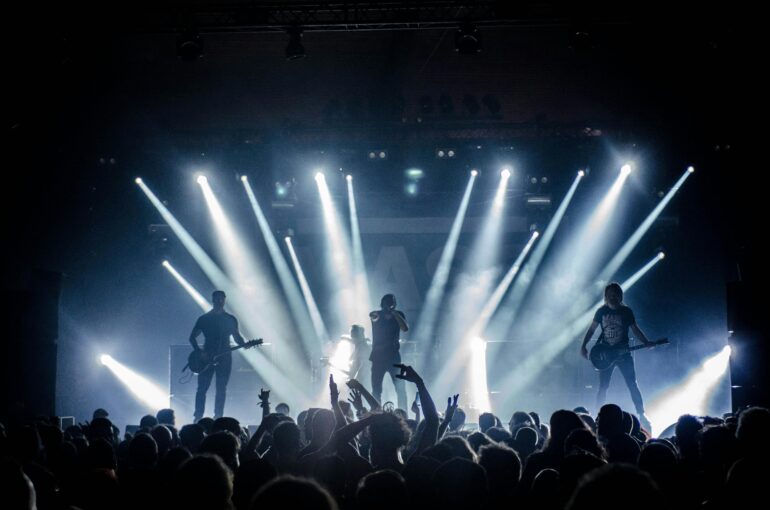Music has always been the centre stage of Indian society – from the historic classical ragas to the modern beats of Bollywood, we have seen extreme development in Indian music. The development of Indian music venues over the years has been quite important in determining the nation’s social and cultural scene.
Originally, the live music venues in India were limited to private events and temple performances. Slowly and steadily, these performances evolved into a thriving business, featuring at events that started drawing worldwide audiences and foreign musicians. Through this blog, we will explore the live music venues in India – from modest origins to world-class venues.
Conventional Musical Venues: The Beginning
Live music venues in India originated in conventional settings such as the temples, palaces, and royal courts. Musical performances during earlier times were connected with religious and cultural events. For instance, Indian classical music, especially Hindustani and Carnatic traditions, found its audience in temples and royal courts during celebrations or spiritual activities. Early shows were quite exclusive, with access usually restricted to priests, guests, or nobility.
On the other hand, rural India was home to community venues where folk music flourished. Regional musicians brought people together to honour life, environment, and spirituality through their folk music, whether in public celebrations, village squares, or open courtyards. These public venues in India highlighted the need for common experiences and cultural celebrations, which helped to shape different live music venues.
The Rise of Auditoriums and Concert Halls
India started modernising at the start of the 20th century, and music venues changed to fit the evolving social scene. The arrival of concert halls and auditoriums in big cities marked one of the most obvious changes in the evolution of music venues. These venues like Chennai’s Madras Music Academy or Mumbai’s Shanmukhananda Hall became legendary locations for classical and semi-classical concerts. These auditoriums became one of the first official live music venues in India that let a bigger audience enjoy and witness live performances.
For urbanites, particularly those who listened to Indian classical music, auditoriums became a mainstay. These places enhanced the live music experience by offering a regulated environment with expert sound and lighting systems. Drawing fans from around the country, they developed centres for cultural events, including the Margazhi Festival in Chennai, which honours classical music and dance.
The Arrival of Western Music and the Birth of Club Culture
Western rock, pop and jazz music started to become popular in India by the 1960s and 1970s. The rise of clubs and bars during this time defined a major phase in developing music venues in India. Intensive venues serving Western music artists emerged in major cities like Mumbai, Bangalore, and Kolkata.
Era of Virtual Live Music Venues
The 2020 pandemic drastically changed the live music scenario. While you could see that the physical venues were shut, the demand for live events never changed. During this time, you could enjoy concerts and live shows through streaming platforms and this age marked a new start in the development of music venues.
The idea of moving concerts online let the musicians and artists quickly adapt to this digital disruption. With the help of online platforms like YouTube, Zoom, and Instagram and Facebook Live, new-age live music venues in India enabled performers to communicate with their listeners from their homes. In this case, geography did not influence these online performances; spectators from all over could tune in to view their favourite Indian performers live. This period was successful in demonstrating how technology might reinvent live music venues in India by eliminating the need for actual physical venues.
The Return of Hybrid Models
The evolution of music venues changed once again as life slowly returned to normal with the arrival of hybrid models. Modern live music venues go beyond either physical or digital spaces. Rather, venues and musicians are considering ways to combine both. Live music is more inclusive than ever because, for instance, live events are now often broadcast online to those unable to attend physically.
Finally, the path of live music venues in India constantly evolves and alters nations. India’s live music culture is growing and innovating, from the hallowed halls of temples and royal palaces to the explosive stages of music festivals and internet concerts. The country currently features a vibrant mix of venues for every sort of music fan, from a jazz enthusiast at an underground club to a classical music listener in an auditorium to a festival goer dancing beneath the stars.
As technology advances and the demand for live performances grows, the growth of live music venues in India will likely witness even more originality. From hybrid concerts to immersive virtual reality experiences, live music fans in India have a great future ahead, and the path is far from complete. Also, the active music venues continue to link audiences and artists in ways that represent a rich past and a promising future ahead.
